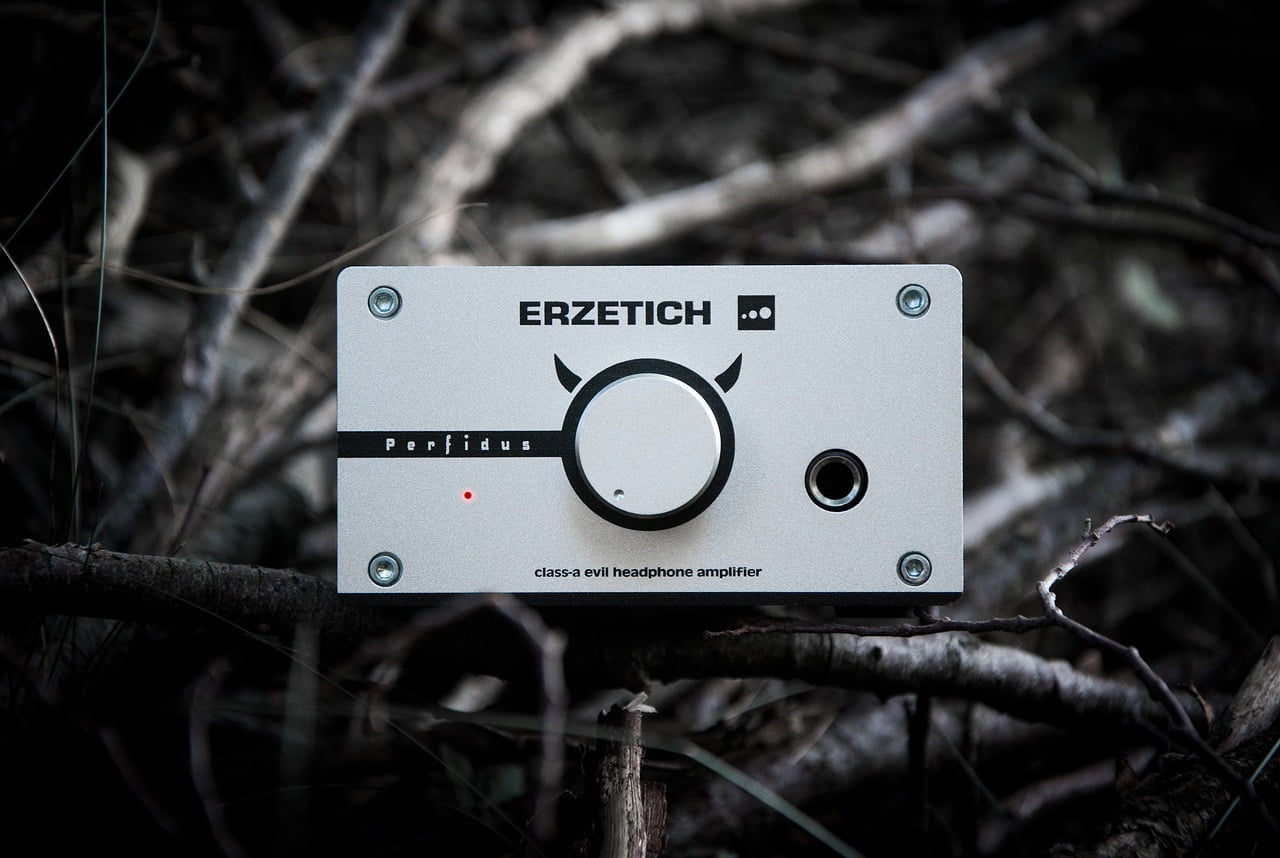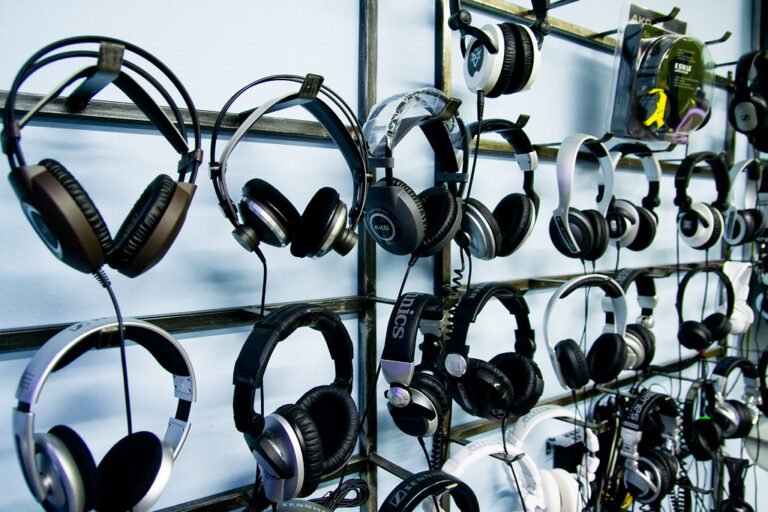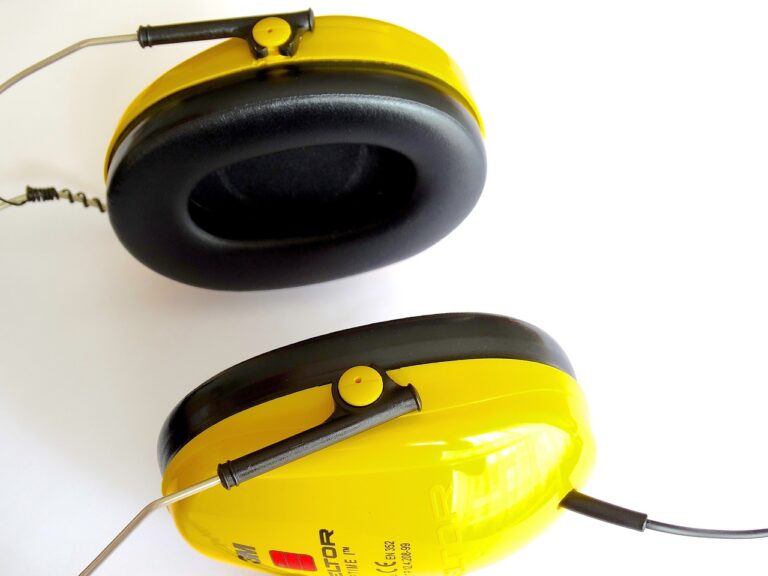Headphone Amplifiers: Enhancing Audio Quality for High-Impedance Headphones
Utilizing headphone amplifiers is vital for enhancing audio quality with high-impedance headphones. These amplifiers optimize power delivery, ensuring accurate sound reproduction and improved clarity. By matching power output to headphone impedance, one can achieve ideal performance and reveal subtle audio nuances. Additionally, reducing distortion with amplifiers enhances sound dynamics and spatial imaging. Understanding the importance of impedance matching, low total harmonic distortion, and amplifier selection criteria is essential for maximizing the audio quality of high-impedance headphones.
We are supported by our audience. When you purchase through links on our site, we may earn an affiliate commission, at no extra cost for you. Learn more.
Importance of Headphone Amplifiers
Headphone amplifiers play an important role in optimizing audio quality by effectively driving high-impedance headphones above 32 ohms. When dealing with high-impedance headphones, the standard headphone outputs of devices like smartphones or laptops may not provide sufficient power to drive the headphones effectively. This can result in reduced volume levels, poor audio clarity, and limited dynamics.
By connecting high-impedance headphones to a dedicated headphone amplifier, the headphones receive the necessary power to perform at their best, leading to a significant improvement in sound quality. The impedance mismatch between high-impedance headphones and low-power outputs can cause distortion and impact the overall audio experience. A headphone amplifier mitigates this issue by delivering the required power, reducing distortion, and enhancing audio clarity.
Quality headphone amplifiers are designed to provide a clean and powerful signal, ensuring that high-impedance headphones can reproduce audio accurately across the frequency spectrum. This precision in power delivery allows for better control of the headphone drivers, resulting in improved detail retrieval and dynamic range. Investing in a headphone amplifier tailored for high-impedance headphones is important for audiophiles seeking the best audio quality and a superior listening experience.
Impedance Matching for Audio Quality
Impedance matching plays a critical role in optimizing sound quality by ensuring efficient power transfer and frequency response. It is not about making impedance values identical but about achieving compatibility for superior audio performance. Properly matched impedance levels facilitate maximum power delivery and help in preserving a balanced frequency spectrum for precise sound reproduction.
Impedance and Sound Quality
With proper impedance matching, the audio quality of high-impedance headphones can be greatly enhanced. When considering impedance and sound quality in the domain of headphones and amplifiers, here are three essential points to keep in mind:
- Optimal Power Transfer: Matching the impedance of the headphone with that of the amplifier guarantees efficient power delivery, leading to improved performance and clarity.
- Frequency Response: Balanced impedance levels between the source and the load result in a smoother frequency response, enhancing the overall audio experience.
- Minimized Distortion: Proper impedance matching reduces distortion, maximizing the efficiency and fidelity of high-impedance headphones for a more immersive sound output.
Matching for Optimal Performance
To achieve peak performance in audio quality for high-impedance headphones, precise impedance matching between the audio source and the headphones is essential. When the headphone impedance and the output impedance of the audio source are well-matched, it guarantees ideal power transfer, enhancing frequency response and power efficiency. This matching doesn’t necessarily mean identical values but aims to maximize the headphone’s potential. Proper impedance matching is vital as it plays a significant role in preventing distortion and preserving audio quality in high-impedance headphone setups. Devices that can accommodate both low and high impedance headphones provide flexibility in audio setups, allowing users to tailor their listening experience while maintaining the integrity of the sound output.
Benefits of Low Total Harmonic Distortion
Ensuring minimal distortion in audio output, low Total Harmonic Distortion (THD) is essential for achieving high-fidelity sound reproduction, especially with high-impedance headphones. Here are the benefits of low THD when using a headphone amplifier with high-impedance headphones:
- Enhanced Audio Quality: Low THD values, typically below 0.1%, are vital for maintaining high audio quality. By minimizing distortion in the audio signal, low THD guarantees that the sound reproduced is accurate and faithful to the original recording, providing a more immersive listening experience for the user.
- Improved Listening Experience: High-impedance headphones require clean amplification to deliver top performance. Lower THD values indicate cleaner amplification of the audio signals, resulting in a more detailed and precise sound output. This improvement in audio accuracy enhances the overall listening experience, allowing users to hear nuances in the music that might otherwise be masked by distortion.
- Preservation of Audio Fidelity: High-impedance headphones are known for their ability to reproduce sound with exceptional clarity and detail. By selecting a headphone amplifier with low THD, you can maintain the audio fidelity of these headphones, ensuring that the full potential of your audio equipment is realized during playback.
Factors Affecting Audio Performance
Factors influencing audio performance encompass a range of critical elements that directly impact the quality of sound reproduction for high-impedance headphones. Matching headphone impedance with the appropriate amplifier is vital in enhancing audio quality. When impedance is mismatched, issues such as distortion, reduced volume, and poor sound quality may arise, emphasizing the importance of impedance matching. Dynamic range and Total Harmonic Distortion (THD) are pivotal factors in determining audio quality. Dynamic range refers to the range between the quietest and loudest sounds a headphone can reproduce faithfully, while THD measures the distortion added to the audio signal.
Understanding sensitivity, impedance, and power requirements is essential for maximizing headphone performance. High-impedance headphones, in particular, require more power to drive effectively, making it imperative to choose an amplifier that can meet these power demands. Failing to do so can result in suboptimal performance. Sensitivity, which indicates how loud a headphone can get with a given amount of power, also plays a key role in achieving the desired audio levels.
Amplifier Selection Criteria
When choosing an amplifier for high-impedance headphones, it is vital to take into account factors such as power requirements and impedance matching techniques. These aspects play a significant role in ensuring peak performance and audio quality. By focusing on amplifier power and impedance matching, one can effectively enhance the listening experience with high-impedance headphones.
Amplifier Power Requirements
Selecting the appropriate amplifier power rating is essential for driving high-impedance headphones effectively. When considering amplifier power requirements for high-impedance headphones, several important factors come into play:
- Output Power: Amplifiers with higher output power ratings are better suited for high-impedance headphones, ensuring adequate power delivery.
- Sensitivity: The sensitivity of the headphones should be taken into account when selecting an amplifier to ensure sufficient power is provided without distortion.
- Matching: Matching the amplifier’s power output to the impedance of the headphones is critical for best performance, maximizing the dynamic range and clarity of sound.
Impedance Matching Techniques
Impedance matching techniques play an essential role in optimizing power transfer efficiency between amplifiers and high-impedance headphones. Proper matching doesn’t require identical impedance values but aims for efficient signal transmission. The correct impedance matching greatly impacts the frequency response and overall audio quality delivered to high-impedance headphones. Understanding the load impedance is important when selecting an amplifier for these headphones to guarantee peak performance. By achieving proper impedance matching, the dynamic range and clarity of audio reproduction can be greatly enhanced, providing a more immersive listening experience. Hence, when considering amplifier selection criteria for high-impedance headphones, paying attention to impedance matching is fundamental to achieving the best possible audio quality.
Enhancing Sound Clarity With Amplifiers
To enhance sound clarity with amplifiers, one must make sure that the power output matches the impedance requirements of the headphones. Achieving this match guarantees that the headphones receive the necessary power to accurately reproduce audio signals. Here are three key aspects to take into account when aiming to enhance sound clarity with amplifiers:
- Power Delivery: Amplifiers provide the necessary power to high-impedance headphones, allowing them to operate at their full potential. This power delivery ensures that the headphones can accurately reproduce both quiet and loud passages of music, enhancing the overall dynamics of the sound.
- Spatial Imaging: Amplifiers can improve spatial imaging by accurately positioning sound sources within the stereo image. This enhancement creates a more immersive listening experience, where each instrument or sound appears precisely located within the soundstage, enhancing the overall spatial depth and separation.
- Reducing Distortion: By diminishing distortion and increasing the signal-to-noise ratio, amplifiers reveal subtle nuances in the audio, especially with high-impedance headphones. This reduction in distortion ensures that the audio signal remains faithful to the original recording, preserving fidelity and clarity in the sound reproduction.







